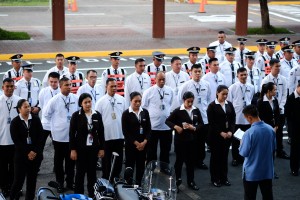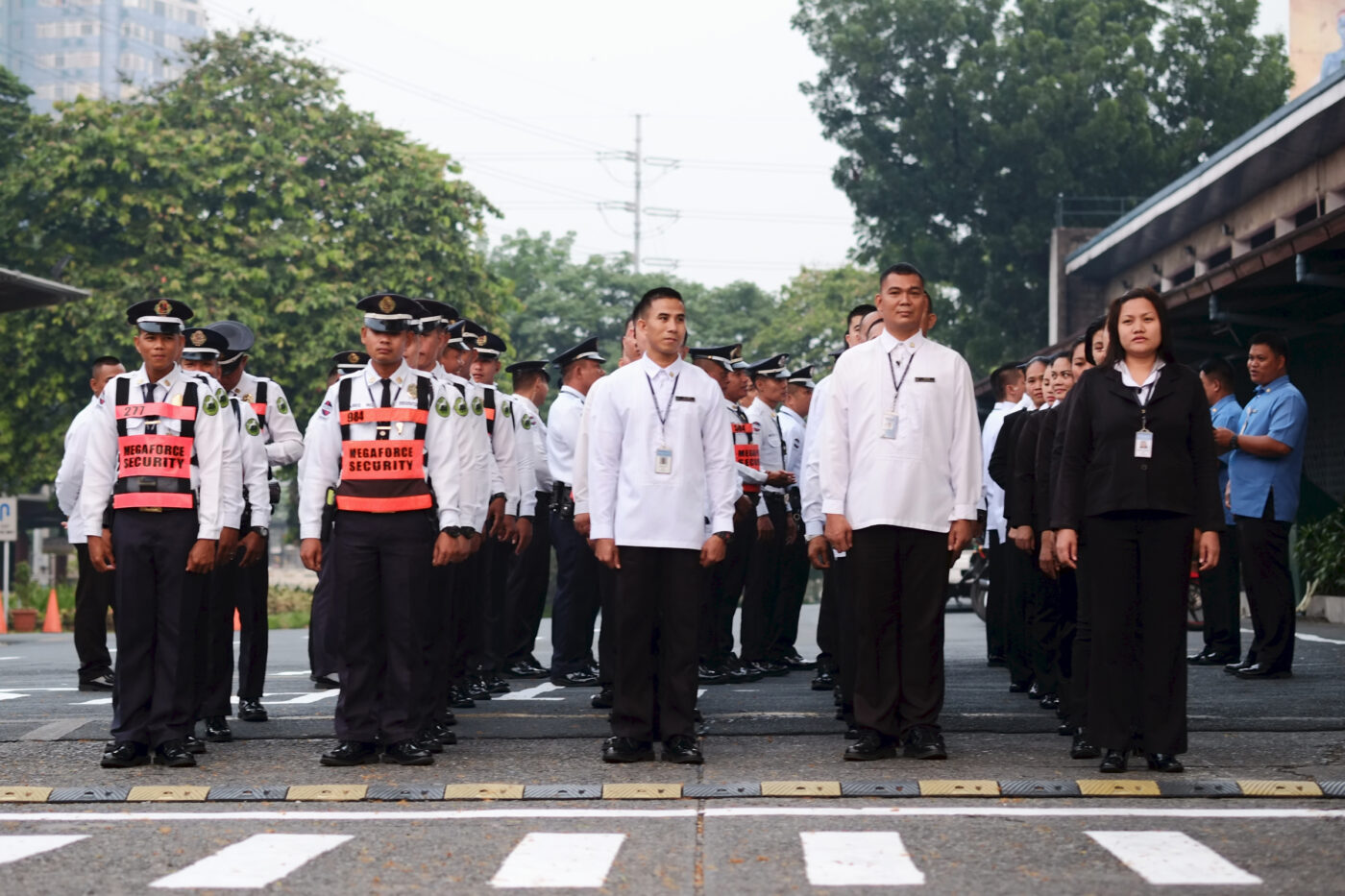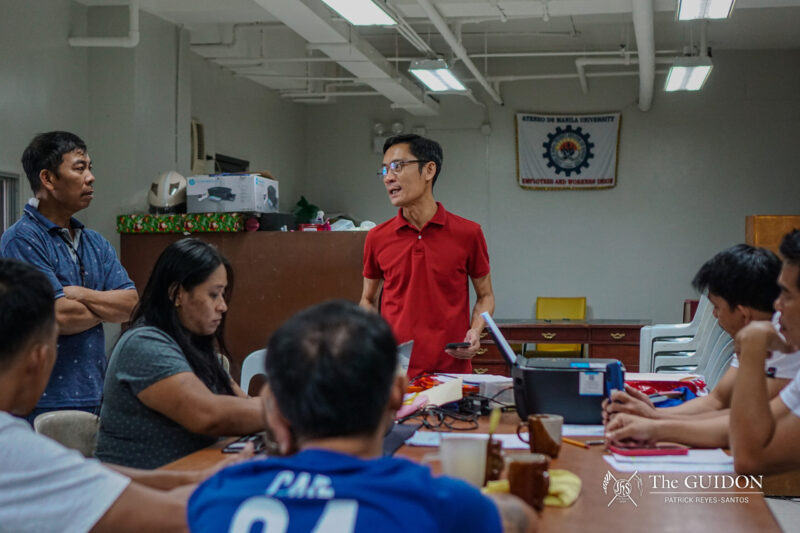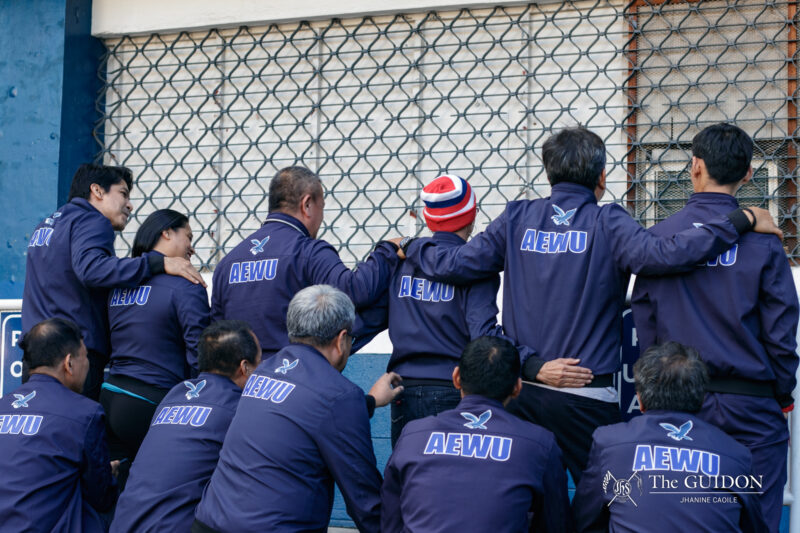UNDER A new leadership, the Facilities Management Office (FMO) has established an alignment program that interlinks security operations with facilities management.
Both recently-appointed, FMO Director Michael Canlas and FMO Safety and Security Head Nhoy Almosera seek to establish an incident-free campus beginning this school year.
According to Canlas, the alignment program allows the security group and the facilities and construction group to expand this common goal and to deliver equal improvements to the campus.
Canlas had previously served in the Loyola Schools (LS) as assistant to the Office of Administrative Services Director for Physical Resources before he was appointed FMO director on April. Almosera had worked in the FMO as technical head to the Ateneo Grade School (AGS) before he was selected as Safety and Security head last March.
The FMO is responsible for the security, maintenance and improvement of the fixed physical assets of all Ateneo campuses. These include the LS, the Ateneo Professional Schools, the Ateneo Center for Continuing Education and the facilities of the Ateneo Information Technology Institute.
Prevention
In line with the FMO’s goal to establish a zero incident program for both the Ateneo community and the facilities, Almosera has geared his team to focus on prevention.
According to Canlas, the FMO is working with security units in order to provide additional measures that will place them ahead of crises. “We have to make sure that from the entry point, we’ll already manage,” he said.
The kidnapping of a student within the university grounds last November, followed by a bomb scare on February, has raised concerns over the campus’ safety.
The FMO has already engaged in mapping exercises to evaluate vulnerable areas in the campus and to determine how they will provide support for the said areas.
According to Almosera, the FMO recently closed the Northwest and Diversion Car Parks after 10 PM since their remote locations make them risky venues, especially during night time.
He added that “proximity cards” will be issued primarily to LS and Central Administration employees to access and exit the Science Education Complex-Gonzaga Car Park beginning on May 26. If successful, this system will be implemented to student parking areas as well.
Almosera said that the FMO is currently working on the establishment of a University Emergency Response Manual, which will serve as a guideline for the Ateneo community in dealing with natural and man-made emergencies.

ON DUTY. Aside from the additional security measures, the Facilities Management Office will also deploy more guards to ensure campus safety. (Photo by Chi D. Punzalan)
Re-emphasized
Before the school year began, the FMO already re-evaluated certain policies to prevent crime from occurring inside the campus.
The FMO has reinforced the strict inspection of identification cards (IDs) for students and Ateneo stickers for vehicles. Additional guards at Gate 2.5 and K9 units around the campus are also being deployed.
Visitors will still need to surrender IDs to security in exchange for a visitor’s pass, while motorcycle riders will be asked to remove their helmets before entering the campus.
The FMO has also added additional lights all over the campus, along with closed circuit television cameras in the parking spaces.
Canlas expressed the importance of the security group in supporting the facilities and construction group, and vice versa.The FMO’s security program will serve as a foundation for a “much safer, secured and friendly campus,” he said.
Confidence
Canlas said that while the FMO has only been under the new leadership for a few months, it has already received support from other communities.
FMO Coordinator to the AGS Victoria Dimalanta said she is confident that a lot of systems will be improved and a lot of programs will be implemented. “We’re getting there, especially with the focus on safety and security first and foremost.”
Dimalanta served as officer-in-charge of the FMO for four months after former FMO Director Jose Arnulfo Batac and FMO Safety and Security Head Julius Badillo stepped down from their posts last November and December, respectively.
Almosera welcomed the involvement of stakeholders in piloting an integrated security program that should focus not only on prevention, but also on emergency training.
For Dimalanta, the only way to engage stakeholders in FMO operations is to familiarize the community with the FMO’s mission-vision statement.
Empowered to “foster a safe, secure and sustainable environment,” the Facilities Management team is envisioned to lead the university in achieving world-class facilities and services.
Dimalanta stressed that the new FMO leadership will begin its term with a team of highly skilled, coordinated and competent workers.
For Canlas, the FMO’s coordinated pace will allow his team to continue bringing improvements to the campus that is in line with the general welfare of the community.
“We are one. We are ready. We will deliver,” he said.







